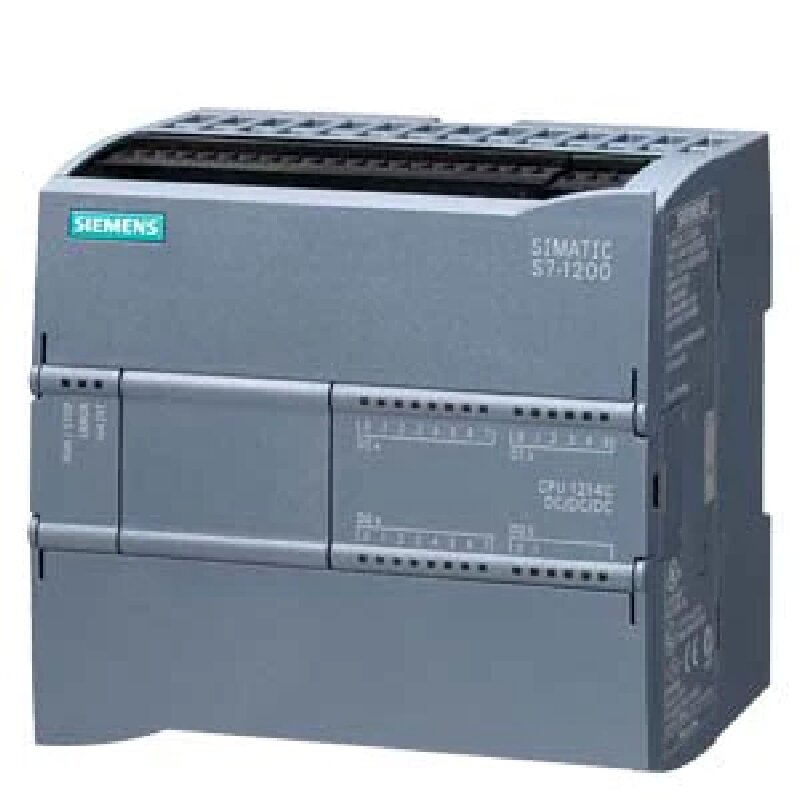
Search

There are various types of Siemens PLCs, such as Siemens PLC S7-200 series and Siemens PLC S7-300 series, which are widely used in various industrial automation fields. During use, users need to process analog signals to implement various logic. The following article introduces the Siemens PLC analog processing method, in order to better use Siemens PLC for users.
Siemens PLC Analog Processing Method
1. Standard signal
In the era of electric sensors, central control becomes possible, which requires long-distance transmission of detection signals. However, the direct transmission of complex physical signals will greatly reduce the applicability of the instrument. Moreover, most sensors belong to the weak signal type, and long-distance transmission is prone to attenuation and interference issues. Therefore, secondary transmitters and standard electrical transmission signals emerged. The function of a secondary transmitter is to amplify the sensor signal into an electrical signal that meets industrial transmission standards, such as 0-5V, 0-10V, or 4-20mA (among which 4-20mA is more commonly used). By shifting the zero point and adjusting the gain of the amplifier circuit, the transmitter can accurately correspond the standard signal to the detected range of physical quantities, such as 0-100 ℃ or -10-100 ℃. This is a mathematical transformation of physical quantities using hardware circuits. The instruments in the central control room drive these electrical signals to mechanical voltmeter and ammeter to display the measured physical quantities. For different range ranges, simply replace the dial behind the pointer. Replacing the dial will not affect the fundamental nature of the instrument, which brings unlimited benefits to the standardization, universality, and large-scale production of the instrument.

If you are looking for a reliable and efficient variable PLC, come to Rockss Automation to take a look and perhaps find a satisfactory product. We have different brands of PLC,such as Siemens PLC, Allen-Bradly PLC, Schneider PLC,etc.
2. Digital instrument
In the digital era, pointer display meters have become more intuitive and accurate digital display methods. In digital instruments, this display method actually uses a purely mathematical method to invert the standard signal, becoming a common way of expressing physical quantities. This transformation relies on software for mathematical operations. These operations may be linear or nonlinear equations, and today's computers are easy to handle these operations.
3. Mathematical problems in signal transformation
The transformation of signals requires the following process: physical quantity - sensor signal - standard electrical signal - A/D conversion - numerical display.
For simplicity, we are discussing linear signal transformations here. Simultaneously skip the signal transformation process of the sensor.
Assuming the physical quantity is A, the range is A0-Am, and the real-time physical quantity is X; The standard electrical signal is B0-Bm, and the real-time electrical signal is Y; The A/D conversion value is C0-Cm, and the real-time value is Z.
Thus, B0 corresponds to A0, Bm corresponds to Am, Y corresponds to X, and Y=f (X). Due to its linear relationship, the equation is obtained as Y=(Bm B0) * (X - A0)/(Am A0)+B0. Due to its linear relationship, the mathematical equation Z=f (X) after A/D conversion can be expressed as Z=(Cm C0) * (X-A0)/(Am A0)+C0. So it is easy to conclude that the mathematical equation for inverse transformation is X=(Am A0) * (Z-C0)/(Cm C0)+A0. The X calculated in the equation can be directly expressed as the detected physical quantity on the display.

4. Calculation method of inverse transformation in PLC
Taking Siemens PLC S7-200 and 4-20mA as examples, after A/D conversion, we obtained values of 6400-32000, C0=6400, and Cm=32000. So, X=(Am A0) * (Z-6400)/(32000-6400)+A0.
For example, a certain temperature sensor and transmitter detect -10-60 ℃, expressed as X=70 * (Z-6400)/25600-10 using the above equation. After calculating the mathematical operation instructions of the PLC, the Siemens HMI can read from the result register and directly display it as engineering quantity.
Using the same principle, we can input engineering quantities on the HMI and then convert them into standardized values used by the control system through software.
In Siemens PLC S7-200, the calculation results of (Z-6400)/25600 are very important values. This is a real number from 0 to 1.0 (100%) that can be directly sent to the detection value input of the PID instruction (not the instruction wizard). The PID instruction outputs real numbers from 0 to 1.0, which can be converted into 6400 to 32000 through the inverse calculation of the previous formula, and sent to the D/A port for 4-20mA output.
Our team of experienced professionals is dedicated to delivering personalized services that exceed our customers' expectations. We offer a diverse range of services,including after-sales and maintenance, among others. Our team is composed of experienced engineers and technicians who are highly skilled in the maintenance and troubleshooting of PLCs.